Eiswein for Entwives
No. 132
February came in hard, just cold enough to freeze the rain, coating the foliage of the city in a thick layer of ice on the morning of the first day of the month. This is the third year we’ve had a serious winter storm by Valentine’s Day in Austin, storms that would be brushed off by any city up north, but seem to break the infrastructure here almost immediately. It was the Texas trees that took it hardest this year, as the freezing rain continued for days, and the weight on the branches brought them down on power lines. No one remarked about how the lines are already held up by dead trees stripped of their limbs, most of them Southern pines embalmed in Pentachlorophenol and diesel oil. People just bitched about how the living trees were allowed to grow so close to the carriers of our light, power, and Internet connections.
I can say this because our family was lucky this time, and didn’t lose our power, unlike half the households on our shared grid. We went a night without Internet, which was a nice break, and a sobering reminder of how digital networks define the reality in which our 3-year-old daughter lives.
That it wasn’t really that bad a storm was evidenced by the fact that the herons never left their rookery down behind the ruins of the old muffler shop. Maybe they already have some of the season’s new eggs, or were about to lay them.
The morning before the ice storm blew in, I walked down there to see the heronry, and to take in the intense fog that cloaked the urban valley as the weather began to change. Thick fogs are common in winter around here, especially on the river, as cold clear nights rapidly dial up into warm sunny days, and they always bring the gift of temporal obfuscation, hiding the signs of the surrounding city when you step down into the floodplain. At least until you step right up onto them, like the Easter eggs in Tarkovsky Park.
Toward the end of that walk, I found one such object: a human skull, face down in the trampled cane. When I reached for it, I saw someone had glued a dozen little square mirrors on the back, and when I picked it up, the two sides of the face had been painted two different colors, and two of the teeth painted gold. It was plastic, and not quite to scale, one of those bits of urban flotsam whose semiotic mystery is charged in part by their appearance in the feral green of an interstitial wilderness. You wonder if it rolled down the bluff from the old outlaw punk club that was demolished along with the muffler shop, floated downriver from some lakefront yard, or was an edgeland sacrifice to the Texas Druid King. Then you realize it’s better not to know. Res ipsa loquitur, as they teach you in Torts.
The next day, after the ice arrived, the finds were different. Including of a real skull, next to an empty can of Budweiser. It was a doe, and looked to have been taken by coyotes a few nights earlier. The rib cage, spine, and a leg were nearby, all coated in the same ice that coated the trees. The sheet of furred skin that had been ripped from the kill was merely wet.
Some branches fell in the woods around our home that week, but the damage was light. The arbors of other neighborhoods seem to have been hit harder, especially those dominated by live oaks, maybe because those branches grow thicker and heavier. Live oaks generally don’t grow in the floodplain. They thrive just above it, close to the river but outside of its raging reach. There aren’t many mature ones in our immediate vicinity, our neighborhood having been dominated by industrial land uses for so long. But there are a few.
Within a week after the ice had melted, the first real signs of spring arrived. The cardinals got busy around the vines that hang over our windows, looking for spots to nest. I saw a pair of hawks flirting between streetscape and woodland, at high speed on a gusty day. The first native flower appeared, a lone yellow bloom of fumewort amid the field of invasive brome behind the door factory. On the peach tree our friends Rob and Ren gave us for our wedding, the flowers had somehow survived 36 hours under ice. Maybe the peaches will be sweeter, if we can get to them before the squirrels.
By Mardi Gras, the spiderwort were starting to open in the garden of rebar, with all the right colors for Fat Tuesday. They thrive in the untended shade of the hackberrys, even though the soil is thick with illegally dumped landfill trash. I wonder sometimes if they take some unlikely nutrients from that, or provide some phyoremediative aid.
The first bluebonnets also started to bloom this week, and the other natives can be seen getting ready all over the unmowed brown lands turning green behind the factories and along the rights of way. But I kept thinking about the trees, maybe because I had been thinking about trees all month.
This week I was working on a chapter for the new book that tries to limn the connection between the idea of the sacred grove, of trees as the place where we find sanctuary amid the divine grace of nature, and the way we live today, planting trees after the bulldozers clear out what was there before. It had me foraging a lot of diverse material—from The Golden Bough to a discussion of the real tree that inspired Miyazaki’s Totoro and an online encyclopedia’s theories of what happened to the Entwives. I came upon an obscure academic article on Joseph Smith’s claimed theophany in an upstate woodland (known to his believers as the Sacred Grove), cogently contending that the story Smith told was effective because of the way it captured a cultural moment when the Puritan disdain for the American wilderness had begun to be counterbalanced by the Transcendentalist embrace of the way it had become our true home. A paradoxical tension in the way we think about the nature around us that persists today.
I visited the secret arbor across the river, where three ancient oaks, each hundreds of years old, frame a view of the shiny new high-rises of downtown. I looked up pictures of our visit ten years ago to the Árbol del Tule in Oaxaca, perhaps the most magnificent tree I have ever seen, a marvel at least 1200 years old that you can immediately see has been an object of worship since long before the church and town hall were built in its shadows. A tree so huge, thicker than it is tall, that no photograph can convey its scale.
I found myself recording my memories of the famous trees around here, most of which are live oaks. I used to have an apartment balcony view of one sad and crowded grove, in a little park on the other side of a downtown parking lot, where the original 301 lots of what became Austin were sold at auction. In my memory, they were called the Treaty Oaks, but that was wrong. Those were the Auction Oaks. The Treaty Oaks were further west. They were originally called the Council Oaks. They were no longer plural. And even after I read the description anew, I was getting the location wrong, thinking of a residential park a few blocks further west. When I finally figured out where it really was, in a spot I knew well, I was baffled that I had never truly seen it. So Thursday at lunchtime I went to correct that.
Local lore passed down from the Anglo-Texan settlers is that the Council Oaks were a grove of fourteen majestic trees west of the new capital city, where the Comanche and Tonkawa would hold councils of war and peace. Our town’s namesake is said to have negotiated a boundary line there, leading to the name. With a century, by the 1920s, development had taken all the other Council Oaks, leaving just the Treaty Oak. The American Forestry Association declared it the most perfect specimen of any tree in North America. Now it stands on a tiny parcel of land at the edge of a strip mall parking lot, across the street from an AT&T store, the Whole Foods flagship, and West Elm.
I bought a vintage tanker desk in that strip mall once, and have parked on the street next to that tree many times headed to lunch meetings nearby. I have sat in backed up traffic to the south of that tree, looking right at it yet never really seeing it, registering it only as another sad pocket of urban landscaping. In my defense, the tree is not the specimen it once was, because in 1989 some asshole tried to kill it, injecting it with the herbicide Velpar in what he claimed was an effort at occult magic. The tree was saved, and the perpetrator went to jail, but what’s there now is a third of what once was.
It’s still magnificent, but to see it, you kind of have to look for it. Because it’s almost like it’s trying to hide from any more human attention. Or maybe it’s just trying to hide its scars, which you only begin to see when you come around to the side farthest from the street, by the entry to the beauty salon.
There’s a chain rope creating a perimeter around the tree, and every few feet a sign warning of the penalties for unauthorized pruning, many of them completely obscured by low branches that have dipped into the dirt and crawled under the chain. There are two plaques, one from the city, the other older one from the Associated General Contractors, who probably paid for that after cutting the deal to build the strip mall around it and leaving the tiny strip that wants you to believe it is a park. There’s one bench there next to the cars where you can sit and admire the tree, but it was occupied Thursday by a sleeping man who was as invisible to the city as what was once its greatest tree.
I found a spot where you could step in under the canopy, the faintest of desire paths. And as I entered that zone, I went back to the story of Totoro, of the idea that great trees harbor magical little worlds that can feel like other realities. The light changed, and the ground was covered with fresh wild growth, most of it shade-tolerant native grasses, but also some naturalized palms. The sudden tranquility was striking, all the more so when I touched the tree, and then when I looked up at its scars—long brutal gnarls of necrotic gray wood. I remembered the sign they had painted on the fence that guarded the Árbol del Tule, in the first-person voice of the tree: Soy un Ser Vivo No Cortes mis Ramas.
But the tree doesn’t need to talk to tell its story. Or to let you know it just wants to be left alone, and maybe endure another 500 years, which if it’s lucky might be long enough to survive the culture that killed its kin and almost killed it.
The reading chair
I got Ents on the brain after coming across an entry in Home Ground, a lexicon of uniquely American landscape terms provided by nature writers and poets in a volume edited by Barry Lopez and Debra Gwartney. The entry was for brown lands, a semi-obsolete urban planning term that encompasses any property left unmaintained by people, from abandoned buildings to empty lots and urban woods. It has mostly been superseded by brownfield, the term used in environmental regulation to designate properties contaminated with toxic pollutants. The entry in Home Ground by Jeffrey Renard Allen references the use of the term by Eliot in The Waste Land. But when you look up brown lands online, what you find are links to Tolkien wikis, referencing the creepy zone the Fellowship passes as they paddle down the great river after their sojourn in the grove of Galadriel:
“…they saw no sign of any enemy that day, nor the next. The dull grey hours passed without event. As the third day of their voyage wore on the lands changed slowly: the trees were thinned then failed altogether. On the eastern bank to their left they saw long formless slopes stretching up and away towards the sky; brown and withered they looked, as if fire had passed over them, leaving no living blade of green: an unfriendly waste without even a broken tree or a bold stone to relieve the emptiness. They had come to the Brown Lands that lay, vast and desolate, between Southern Mirkwood and the hills of the Emyn Muir. What pestilence of war or evil deed of the Enemy had so blasted all that region even Aragorn could not tell.”
For a more comprehensive guide to the kind of brown lands this newsletter explores, I highly recommend Natura Urbana: Ecological Constellations in Urban Space, by the Cambridge geographer Matthew Gandy. It’s an academic work, but a readable one, and an astonishingly comprehensive survey of scientific, sociological, and artistic explorations of such spaces. One of those books that adds to your reading list on every page, with references to works like Richard Deakin’s The Flora of the Colosseum (1855), Richard Jefferies’ Nature Near London (1893), Alan Beck’s The Ecology of Stray Dogs (1973)—which arrived in Saturday’s mail—and W.G. Sebald’s On the Natural History of Destruction (1999), an exploration of the flora that grew in the bomb sites of Germany that my son had turned me onto a year ago but I hadn’t yet delved into.
You can read about the Árbol del Tule here, link to the sad story of the Treaty Oak here, or browse this exhaustive Wikipedia list of individual trees around the world.
If you want to get ready for what’s coming, Alex Steffen has a great one on climate crisis readiness up at The Snap Forward.
The new novel from Field Notes friend Ed Park, Same Bed Different Dreams, which looks amazing, is now available for preorder.
And if you like sad songs about the guys who deal with downed power and telecom lines, there’s always this Glen Campbell + Jimmy Webb earworm.
Thanks for reading. Field Notes will be back again in a few weeks, as I work on the new schedule while writing the new book. In the meantime, enjoy the beginnings of spring.



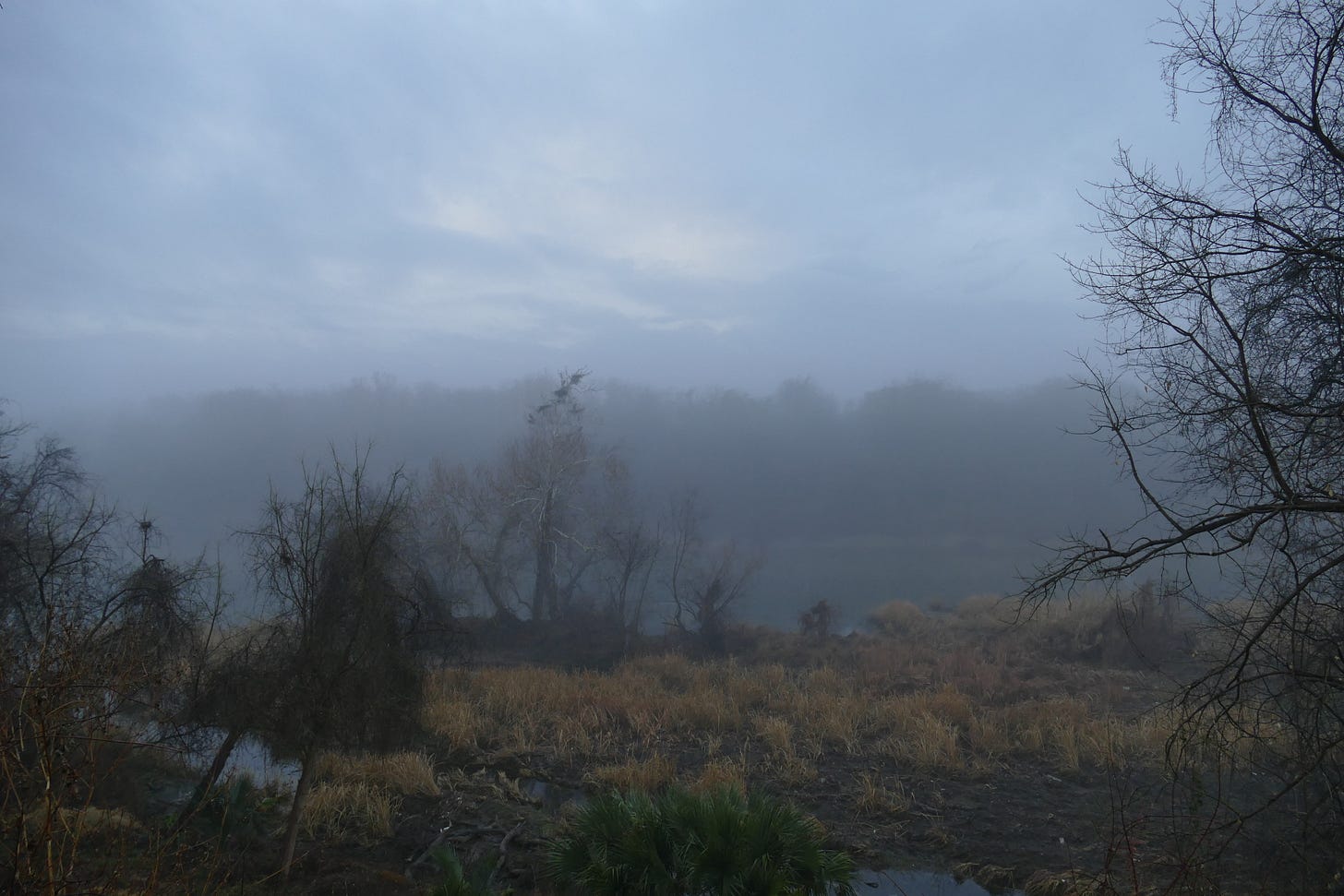
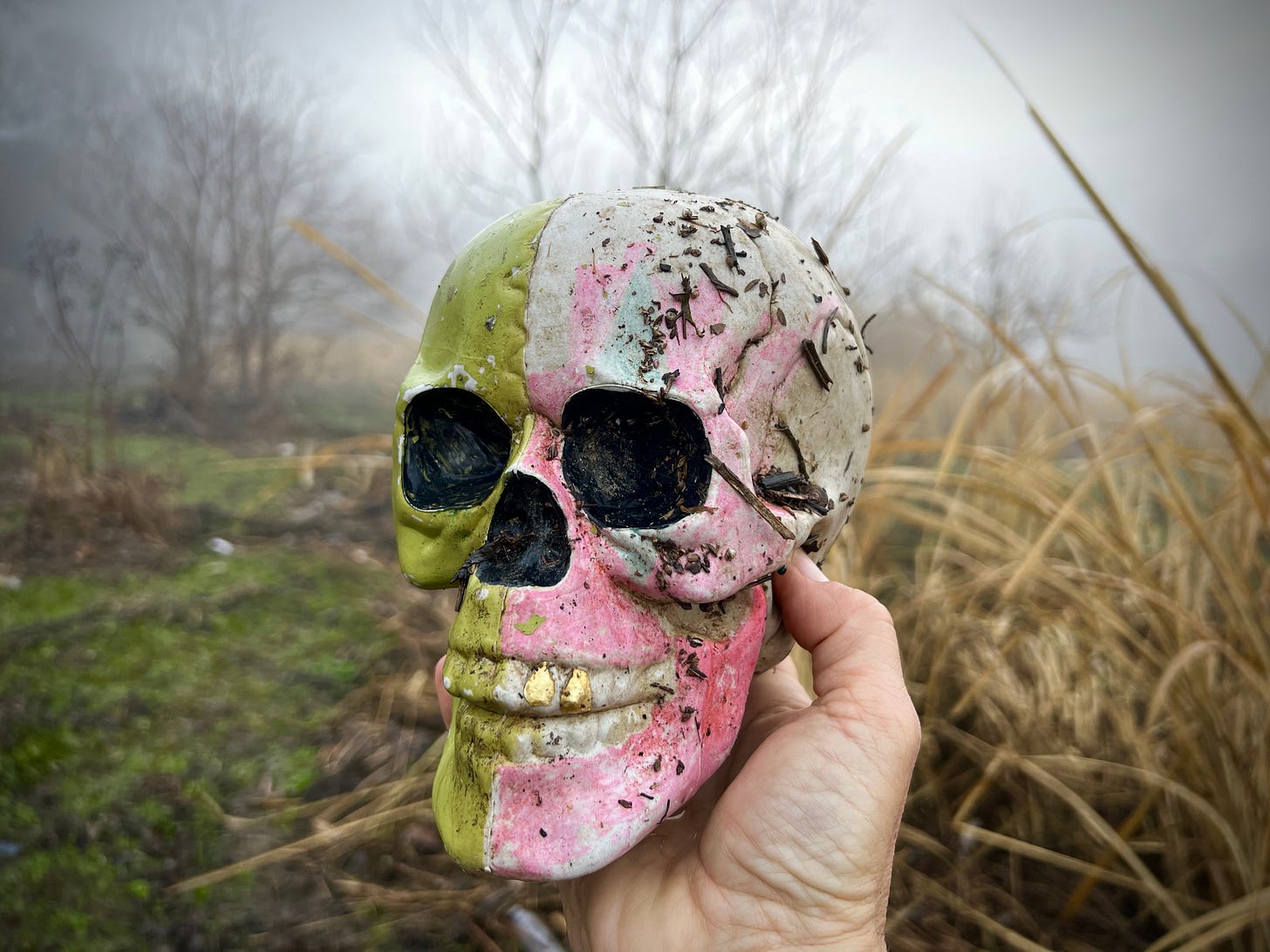


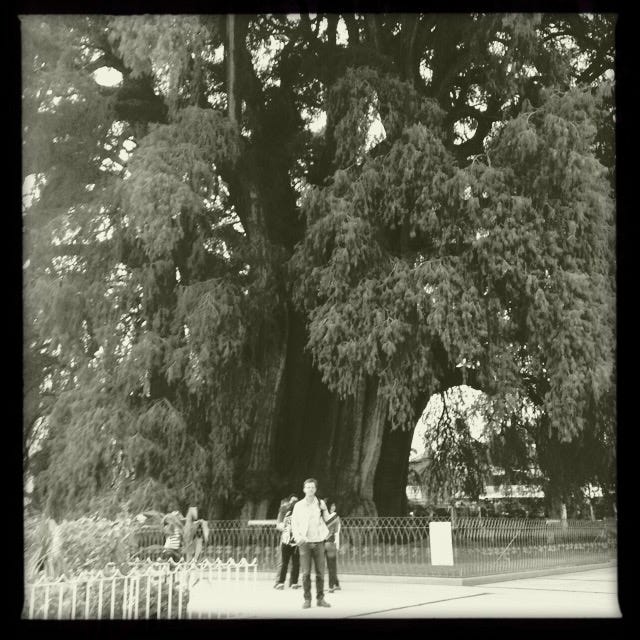

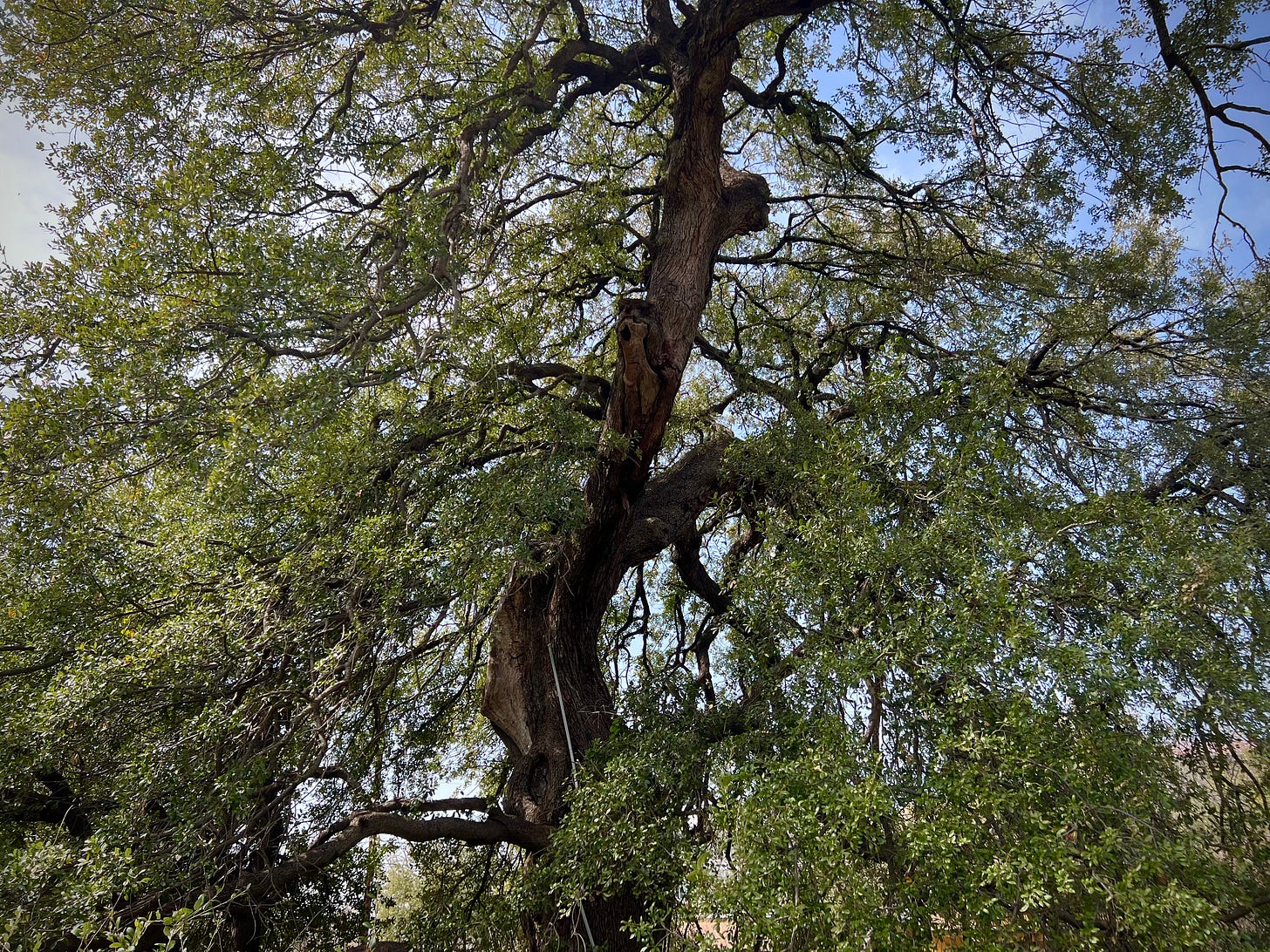
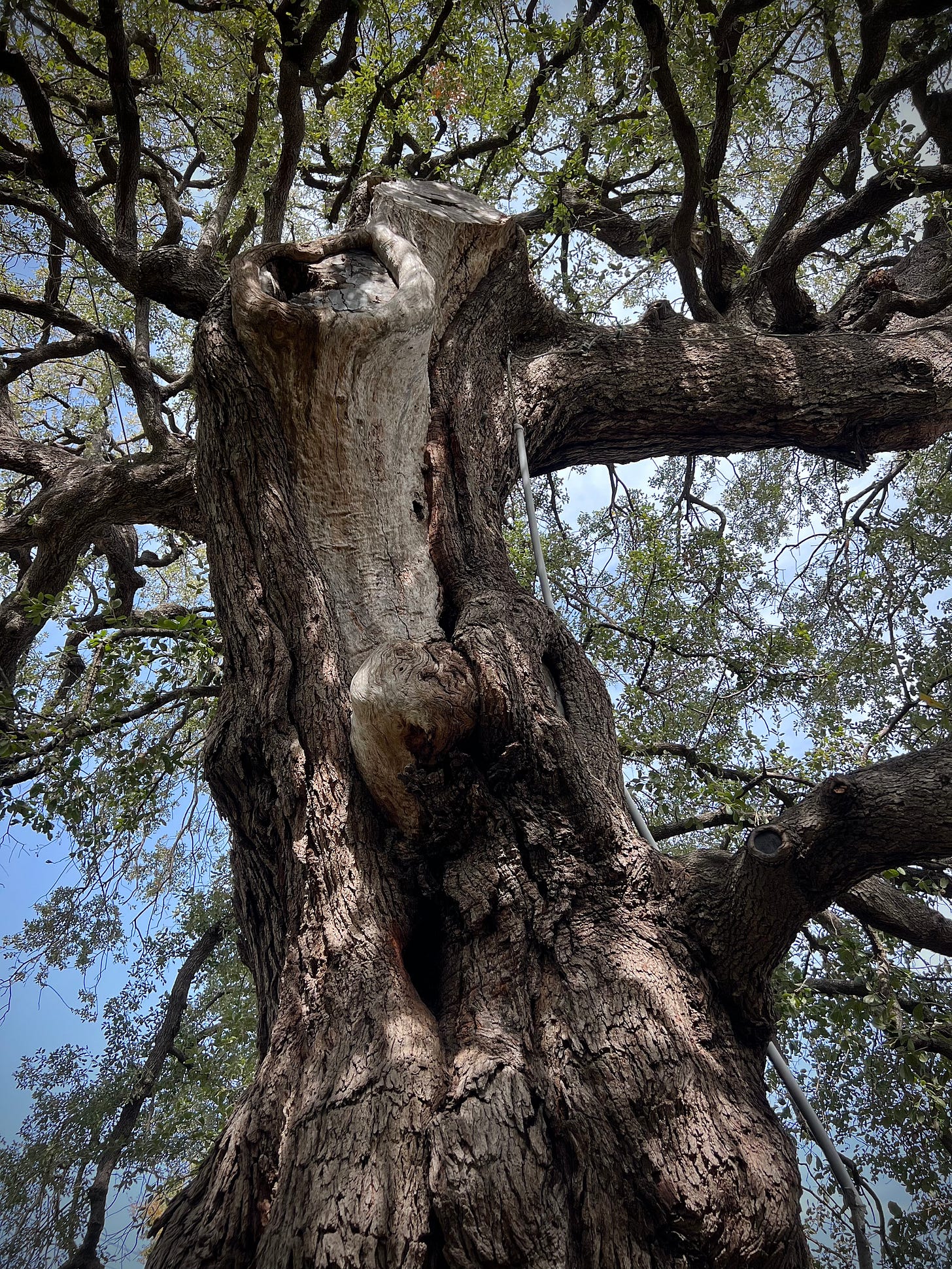
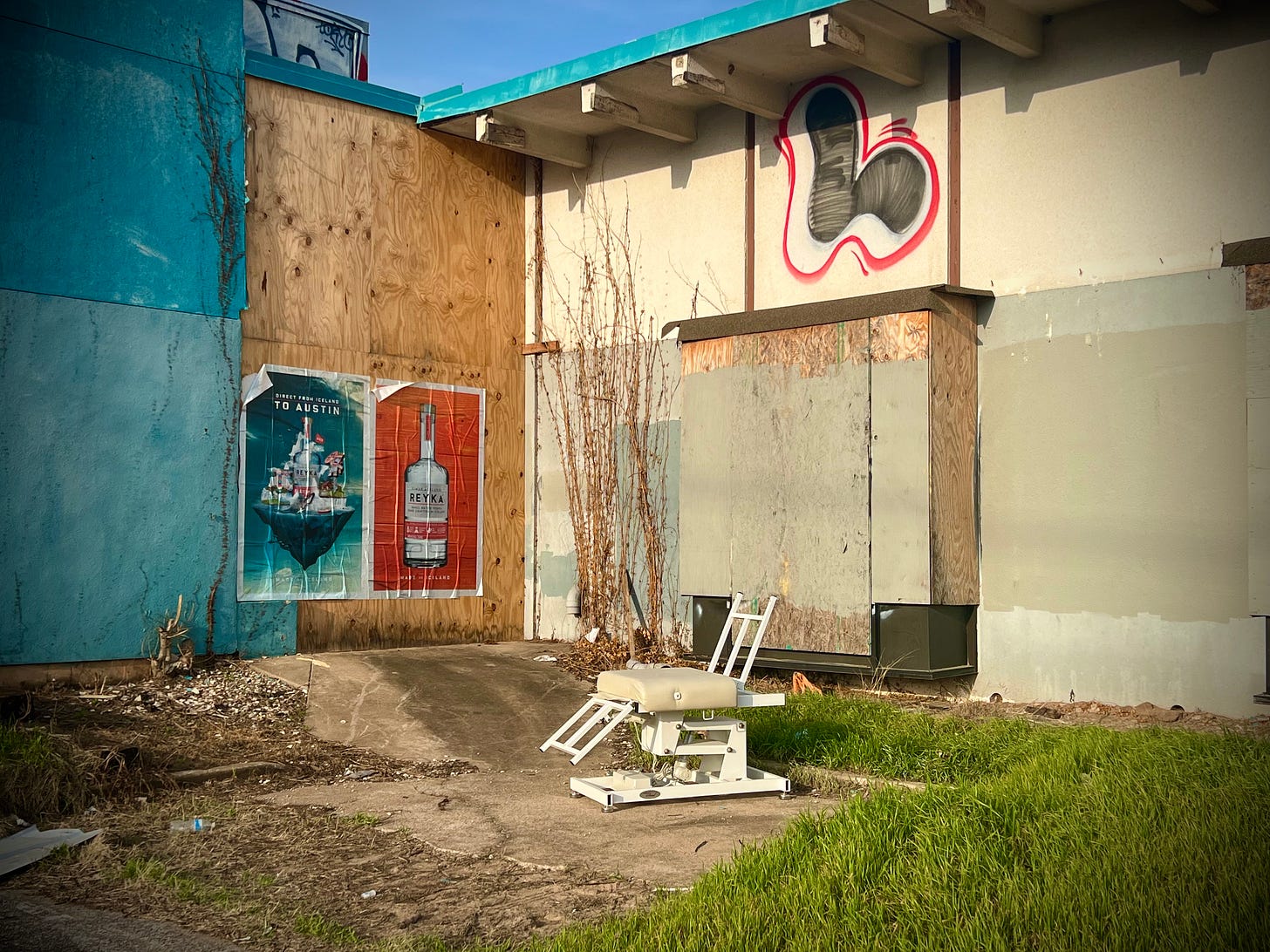
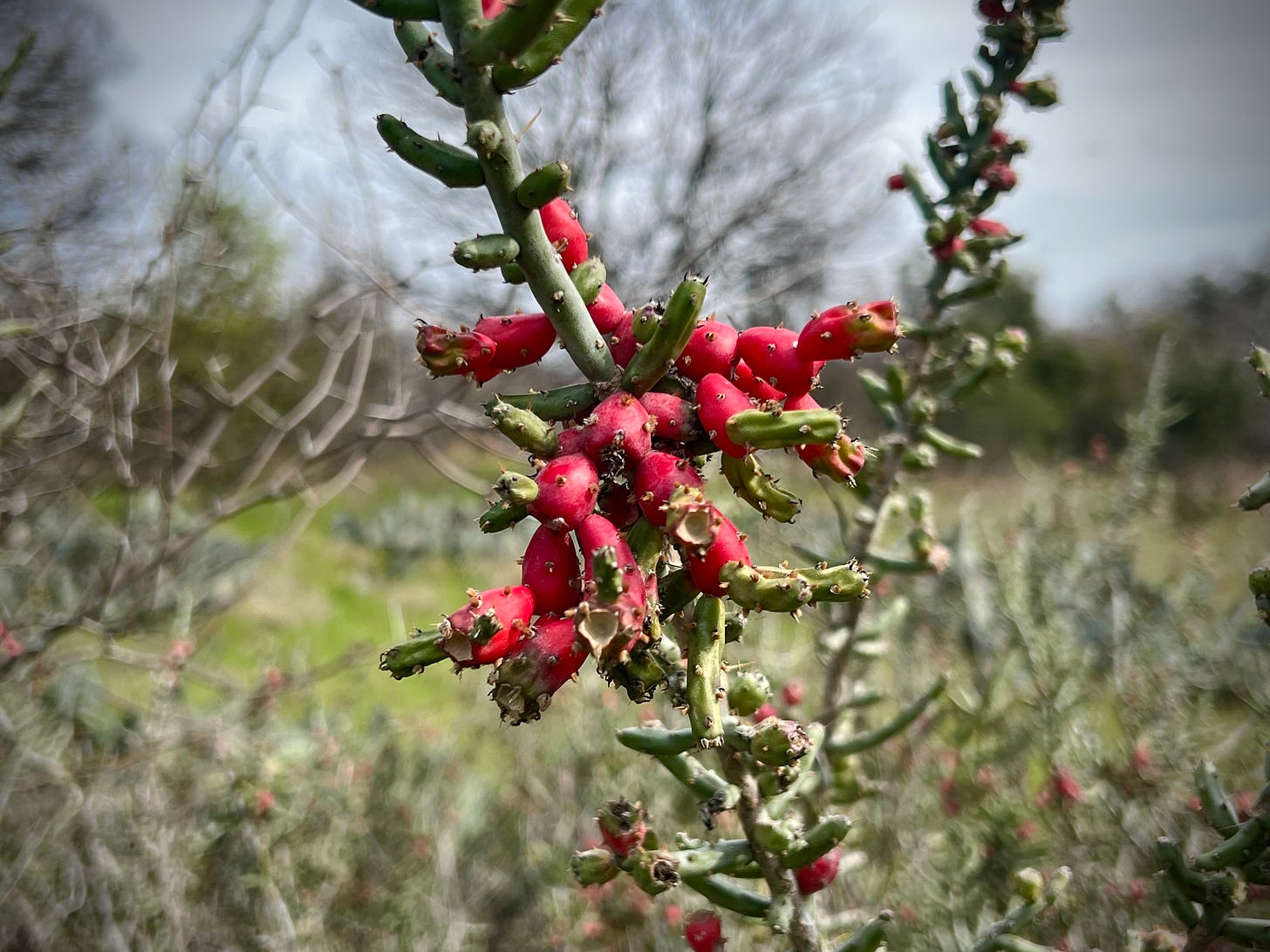
Mildly related, but mostly a note that if you're not you really should be reading Wallace the Brave. https://www.gocomics.com/wallace-the-brave/2023/02/27
Thanks for the stories, the excellent writing and the always entertaining links and reading suggestions. Good luck with your new schedule.